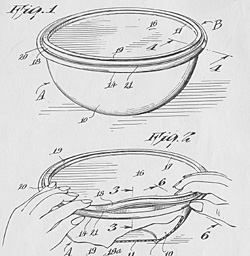|
Factory Insurance Association
Fire insurance map for Pratt, Read & Company keyboard factory
Deep River, Connecticut:
1921.
Images
courtesy National Museum of American History, Behring Center

|
Fire insurance map for Pratt, Read & Company keyboard factory, Deep River, Connecticut, 1921>
Factory Insurance Association
printed ink on paper
|
Beginning in the late 1800s, fire insurance maps were created for every factory and urban area in the country. Used by underwriters to assess risks and establish premiums, these records show individual building “footprints,” often color-coded by construction material. With their wealth of data about building use and construction, these maps are valuable sources of information about urban history, architecture, geography, and archeology.
Hendrick Manufacturing Co.
Notebook of Hendrick Manufacturing Co.
1890-1891.
Images
courtesy National Museum of American History, Behring Center

|
Notebook of Hendrick Manufacturing Co.,
Carbondale, Pennsylvania, 1890-1891
|
This notebook contains copies of shop orders for products ordered from Hendrick Manufacturing Company. (The originals would have been sent to the shop floor.) Each copy was made by pressing a dampened sheet of tissue paper onto an original document written in special ink. Hendrick retained the bound copies as a record of what had been ordered.
Alexander Lyman Holley
(1832-1882)
Rail mill engine for Bethlehem Iron Company
Providence, Rhode Island:
about 1873.
Images
courtesy National Museum of American History, Behring Center

|
Rail mill engine for Bethlehem Iron Company, about 1873
Alexander Lyman Holley, Providence, Rhode Island
ink on paper
|
Mechanical engineer Alexander Lyman Holley (1832-1882) designed this rail mill steam engine for the Bethlehem Iron Works (later Bethlehem Steel Company). In an age when size could be equated to strength, this massive engine was quite powerful, although it appears deceptively small here. As drawn, the engine stood more than 24 feet tall. Its drive shaft alone was two feet in diameter; the weights on the flyball governor (a mechanical speed-regulating device) located in its base each measured one-and-one-half feet in diameter.
Samuel B. Howd
Patent drawing for water wheel
Geneva, New York:
1838.
Images
courtesy National Museum of American History, Behring Center

|
Patent drawing for water wheel, 1838
Samuel B. Howd, Geneva, New York
ink and watercolor on paper
|
Countless waterwheels were patented in 19th-century America, when water power was a cheap and available energy resource. This drawing for a waterwheel came from Samuel B. Howd’s 1838 patent application. It shows not only the particular improvement being patented, but also how it fits into the larger context of the complete waterwheel. A detailed written description and a three-dimensional model were also part of his application.
Maidenform Co.
Patent drawing of Maidenform brassiere
New York, New York:
1938.
Images
courtesy National Museum of American History, Behring Center

|
Patent drawing of Maidenform brassiere, 1938>
William Rosenthal and Charles M. Sachs, Maidenform Co., New York, New York
printed ink on paper
|
Regardless of product type, the U.S. Patent Office requires a very distinctive style of technical drawing to accompany patent applications. In addition to one or more drawings depicting the invention, each application must also contain a detailed technical description and a list of claims for what is new about the invention.
>
The Maidenform Company received hundreds of patents on its brassieres.
New United Motor Manufacturing Inc.
Reference notebook of quality inspector, about 1989
Fremont, California:
about 1989.
Images
courtesy National Museum of American History, Behring Center

|
Reference notebook of quality inspector, about 1989
Rick Madrid, New United Motor Manufacturing Inc., Fremont, California
|
Rick Madrid, a quality inspector at the NUMMI plant that manufactured Toyota Corollas and Chevrolet Novas, created this unique reference book of miniature shop drawings. Kept in his pocket for ready reference, the book helped Madrid confirm that parts were made to standard.
Frank P. Sheldon
(1865-1941)
Notebook
Providence, Rhode Island:
probably 1870s.
Images
courtesy National Museum of American History, Behring Center

|
Notebook, probably 1870s
Frank P. Sheldon, Providence, Rhode Island
|
Trained as a mechanical and civil engineer, Frank P. Sheldon (1865-1941) entered the textile business as a mill engineer in the 1870s. He designed steam, hydraulic, electrical, and mechanical systems for many New England mills, specializing in the reorganization of operations. He recorded his observations on the mechanical details of mills in this notebook. Judging from its condition, he carried it with him on many inspection tours.
Earl S. Tupper
(1907-1983)
Patent drawing of bowl and cover
Leominster, Massachusetts:
1957.
Images
courtesy National Museum of American History, Behring Center

|
Patent drawing of bowl and cover, 1957
Earl S. Tupper, Leominster, Massachusetts
printed ink on paper
|
Before gaining fame as the inventor of Tupperware, Earl Silas Tupper (1907-1983) worked as a mail clerk and on a railroad labor crew, ran a successful landscaping and nursery business, founded an industrial plastics company, and spent years developing a wide range of inventive ideas.
In 1947, he came up with the unique, air-tight, water-tight "Tupper Seal" for containers that kept food fresh and prevented spills. This breakthrough, along with an innovative “home-party” marketing technique, laid the foundation for Tupperware’s success.
Westinghouse Machine Co.
1500-KW Steam Turbine Alternator for Hartford Electric Light Co.
Pittsburgh, PA:
1899.
Images
courtesy National Museum of American History, Behring Center

|
1500-kW steam turbine alternator for Hartford Electric Light Co., 1899
Westinghouse Machine Co., Pittsburgh, Pennsylvania
ink on paper
|
This elegant drawing by the Westinghouse Machine Co. represents the first large American steam turbine electric alternator unit. One of the most remarkable advances to take place in the history of power technology occurred with the introduction of the steam turbine. By the time this turbogenerator unit commenced operation in Hartford, Connecticut, in 1901, the steam turbine had rendered the reciprocating steam engine almost totally obsolete.
This drawing was made in 1899; the unit was shipped and installed in 1900, and in operation in 1901. Whether used as a sales tool or a reference for Westinghouse designers and builders, the drawing captures the power and novelty of the new technology.
|









